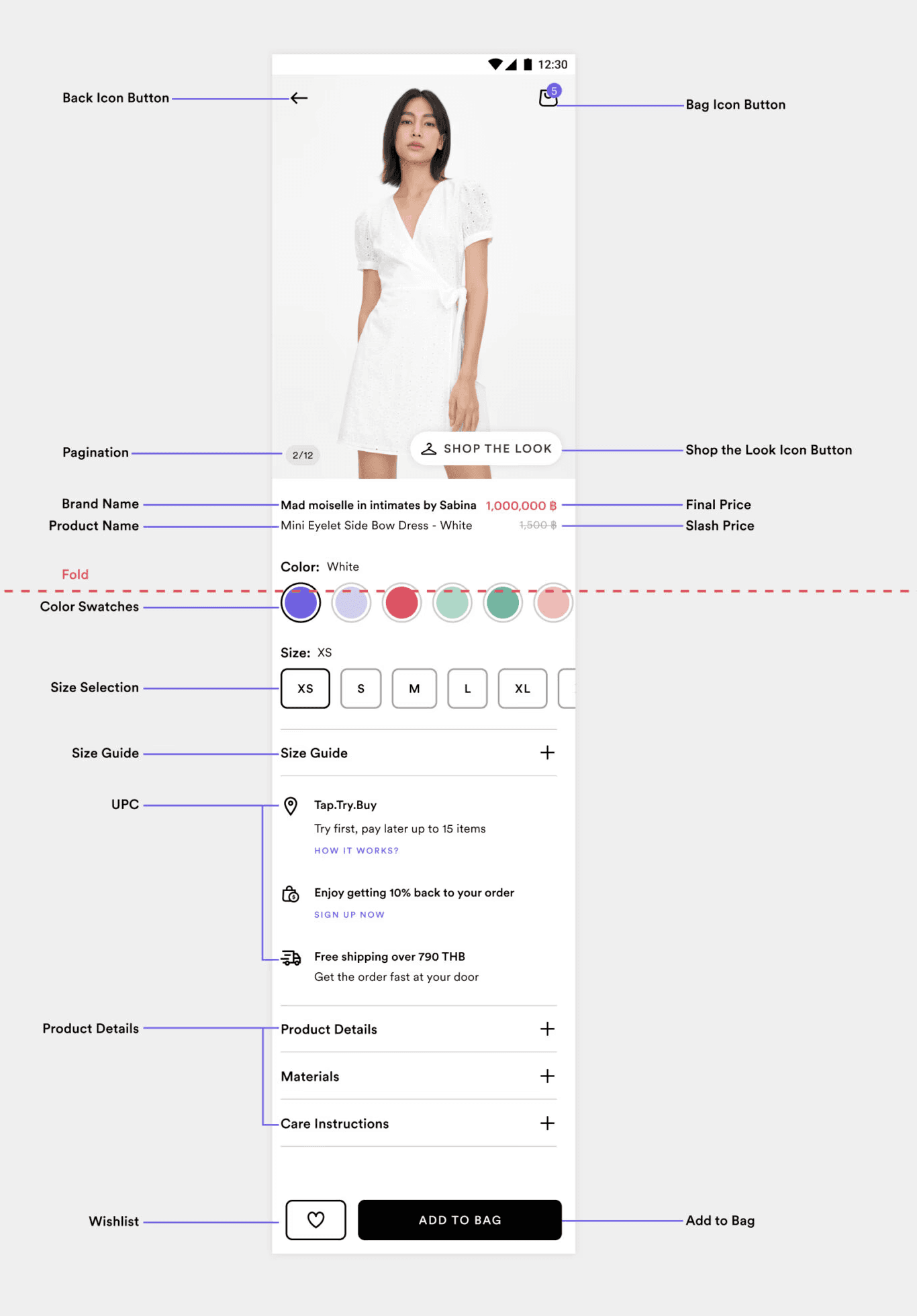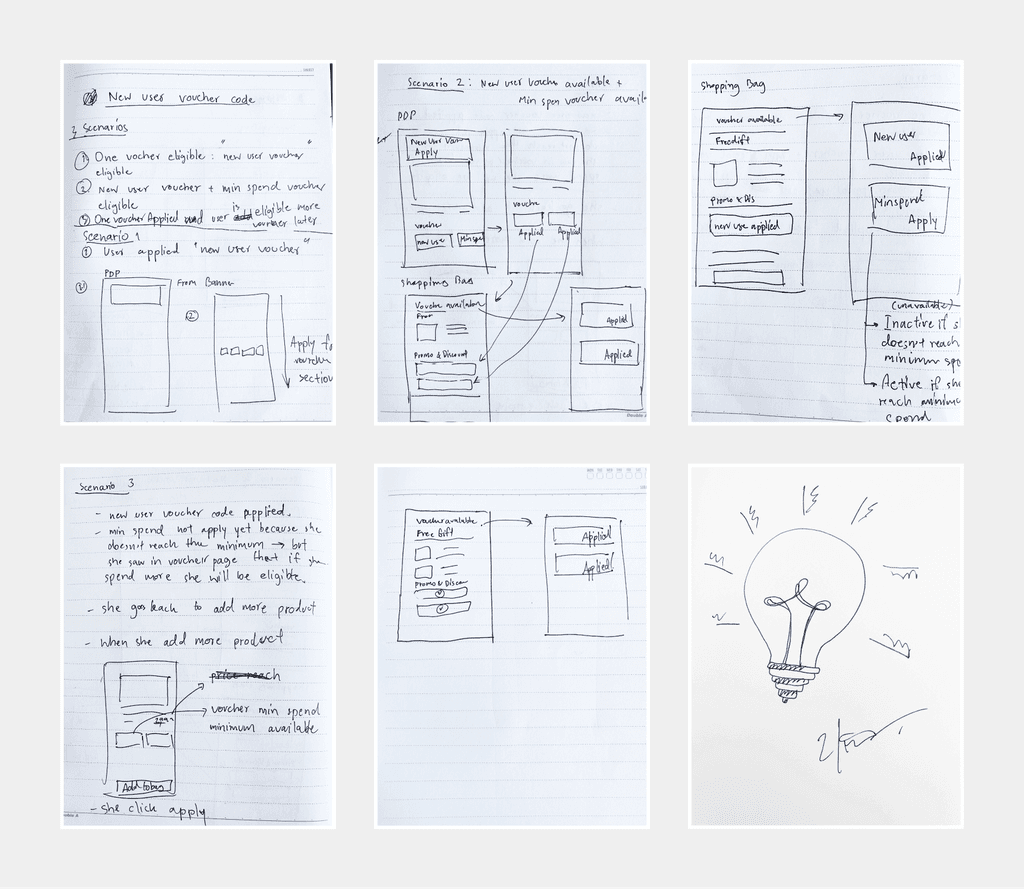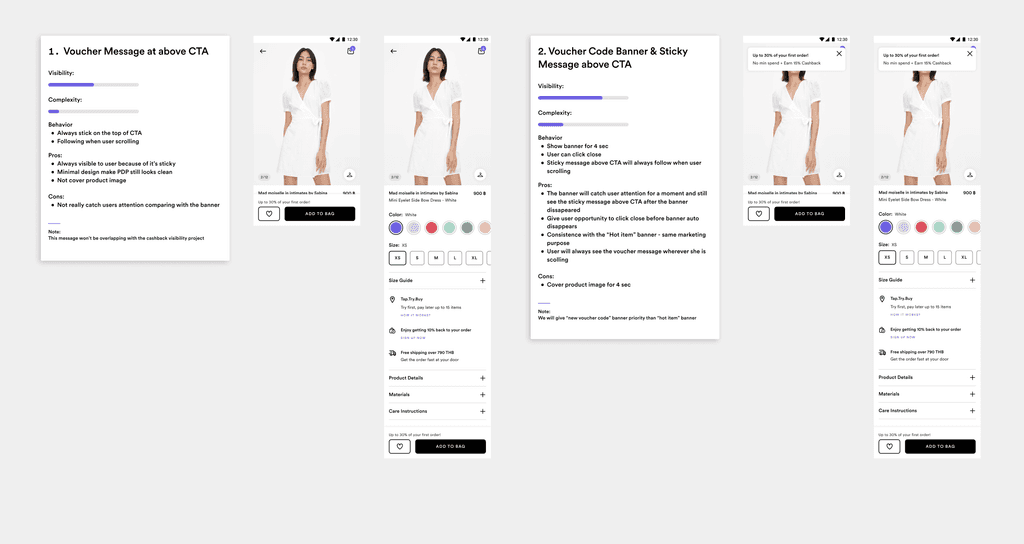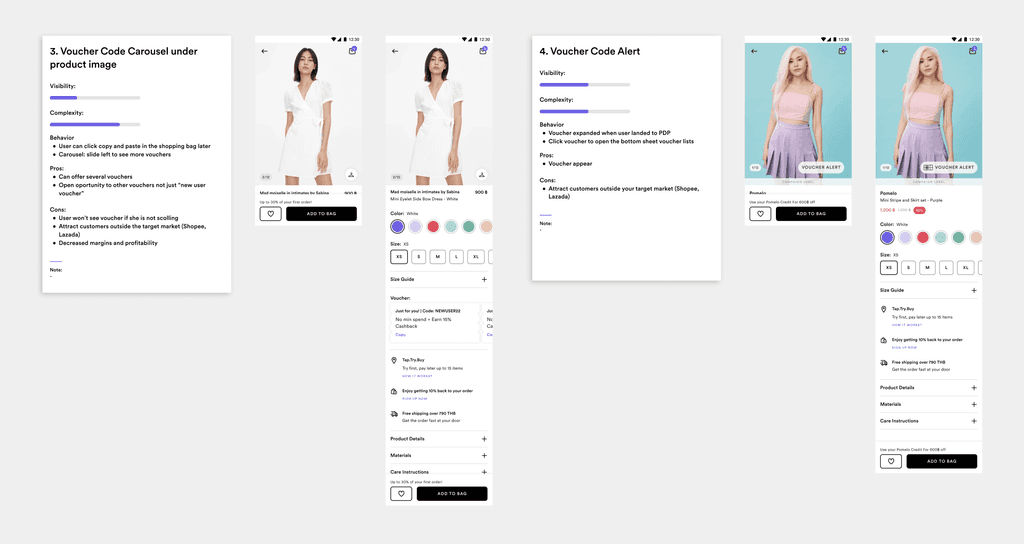Maximize CVR in
Online Shopping
Designing vouchers to maximize the conversion rate on the product page by 400%.
Role & Responsibility
UX/UI, Researcher, Interaction Design, Prototyping
Industry
e-commerce, fashion
Year
2022
Collaborators
outcome
441%
increase in order conversions upon launch
45%
reduction in discount costs
Backstory
Pomelo - Your Fashion Playground.
Pomelo is Southeast Asia’s leading omnichannel platform with a global mindset: on-trend, online, on-the-go. Shop 1,000s of styles & brands all in one place, online & in stores.
In 2021, Pomelo expanded from being an in-house fashion brand to include third-party local Thai and international brands like Nike, Converse, and Calvin Klein. However, while this attracted many new users, they remain inactive and haven’t made purchases. Pomelo is now investigating ways to improve new user conversion rates.
The highlight of this project is to share how e-commerce platform increase their revenue in one area - Product page
Problem & Challenge
Business Context:
Pomelo expanded to offer third-party brands, attracting many new users. However, we saw a significant drop-off in conversions.
Disclaimer for Data Geeks: The product page is the most visited screen on the Pomelo app — it accounts for nearly 70% of all sessions. But its order conversion rate was just 0.523%, the lowest across all key flows. In comparison with App Feed: 2.03% and Product List Page: 0.754%
This showed us a huge opportunity: we had users viewing products, but they weren’t converting.
Design Challenge:
How can we nudge users to complete a purchase directly from the product page — without harming the brand or user experience?
Research & Insights
The pros and cons of online store offers
Pros:
Increased customer loyalty
Increased customer acquisition
Increased conversions
Quickly move stock
Meet sales goals
Cons:
Decreased margins and profitability
Possible brand damage
Decreased conversions outside of sale periods if you train visitors to wait for offers
Tendency to drive non-loyal (price-driven) shoppers
Tendency to reduce average order size
Attract customers outside your target market
Competitors Analysis
I conducted a competitive analysis on how vouchers are presented across similar platforms and observed that Pomelo is transitioning from a fashion-focused brand to a broader marketplace model. However, users continue to perceive it primarily as a fashion platform, which may lead to confusion. To address this, the research was divided into two categories, each offering distinct insights.
Fashion Brands: International brands rarely display vouchers on product pages; Asian brands tend to feature more promotions.
Marketplaces: Both international and Asian marketplaces prominently display vouchers across multiple pages, focusing on new user acquisition.
Key Finding
While vouchers can boost conversions, they may also reduce profit margins and train users to expect discounts, potentially harming brand perception.
Product Page Analysis (IA)
Identified the image area as the only viable space for voucher placement, adhering to the guideline of not covering the model to maintain visual clarity.
Ideation & Sketches:
Explored various placements and designs to integrate vouchers seamlessly without distracting from product visuals
Final Design & Implementation
Solution: Introduced a discreet yet prominent voucher overlay on the product image, targeting new users to encourage purchases.
Rollout Strategy: Initially launched for new users to mitigate risks, with plans to expand based on performance metrics.
Link to Figma
Results & Reflections
Outcomes:
Achieved a 441% increase in order conversions upon launch.
Realized a 45% reduction in discount costs.
Achieved a 260% YoY increase in voucher usage per session.
Learnings: Strategic voucher placement can significantly boost conversions without compromising brand integrity."
Future Considerations: Explore personalization of voucher offers and assess long-term impacts on user behavior and profitability.












